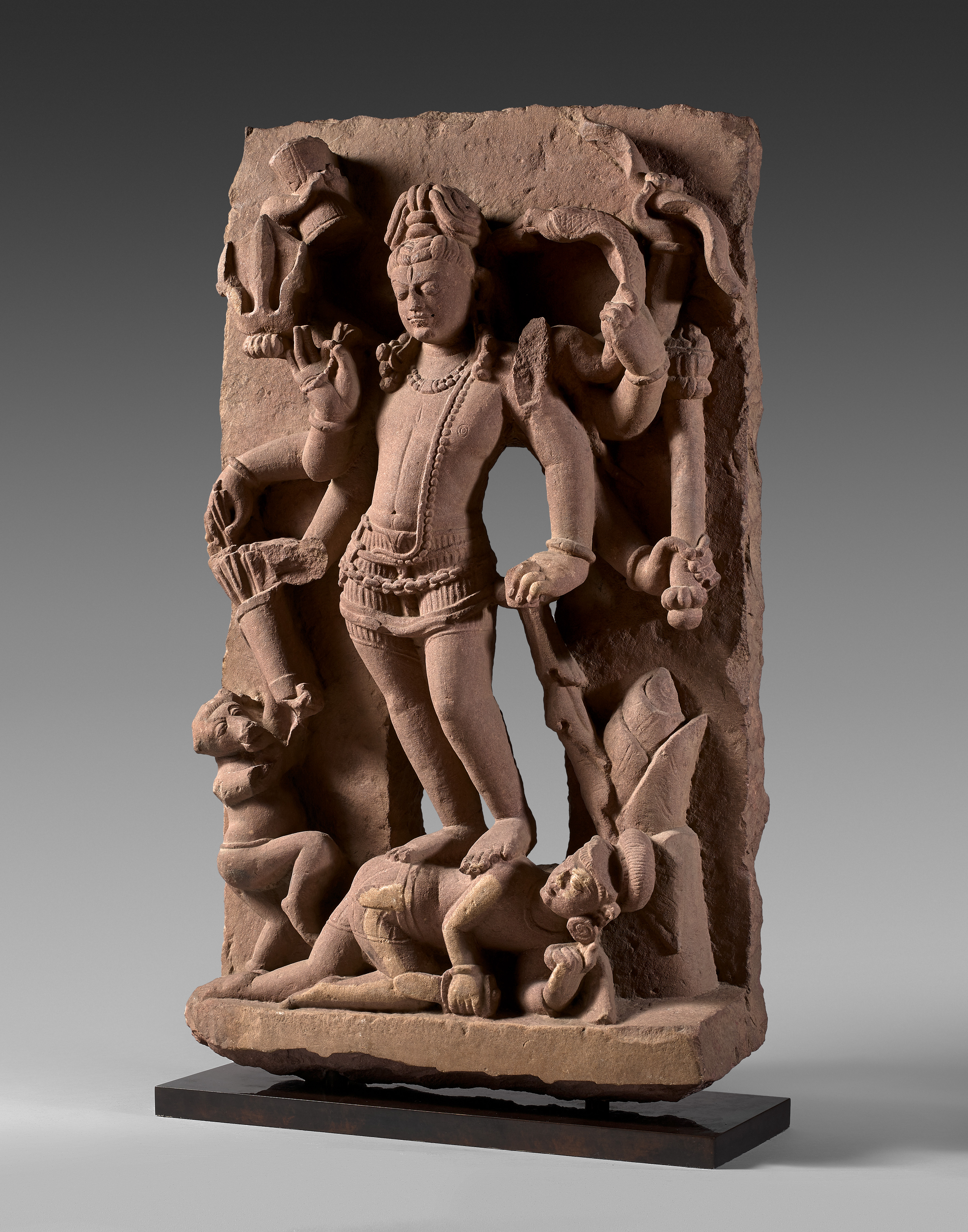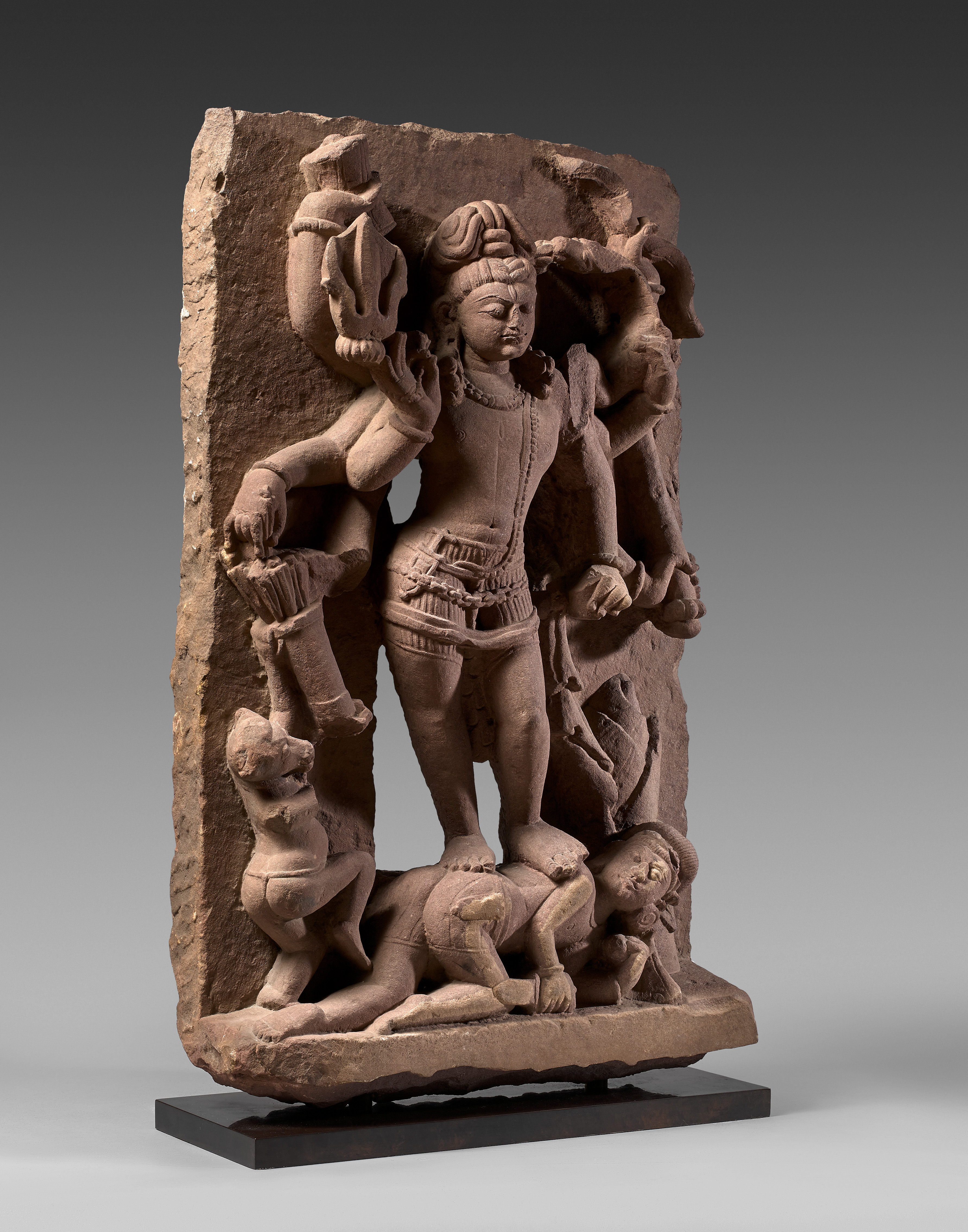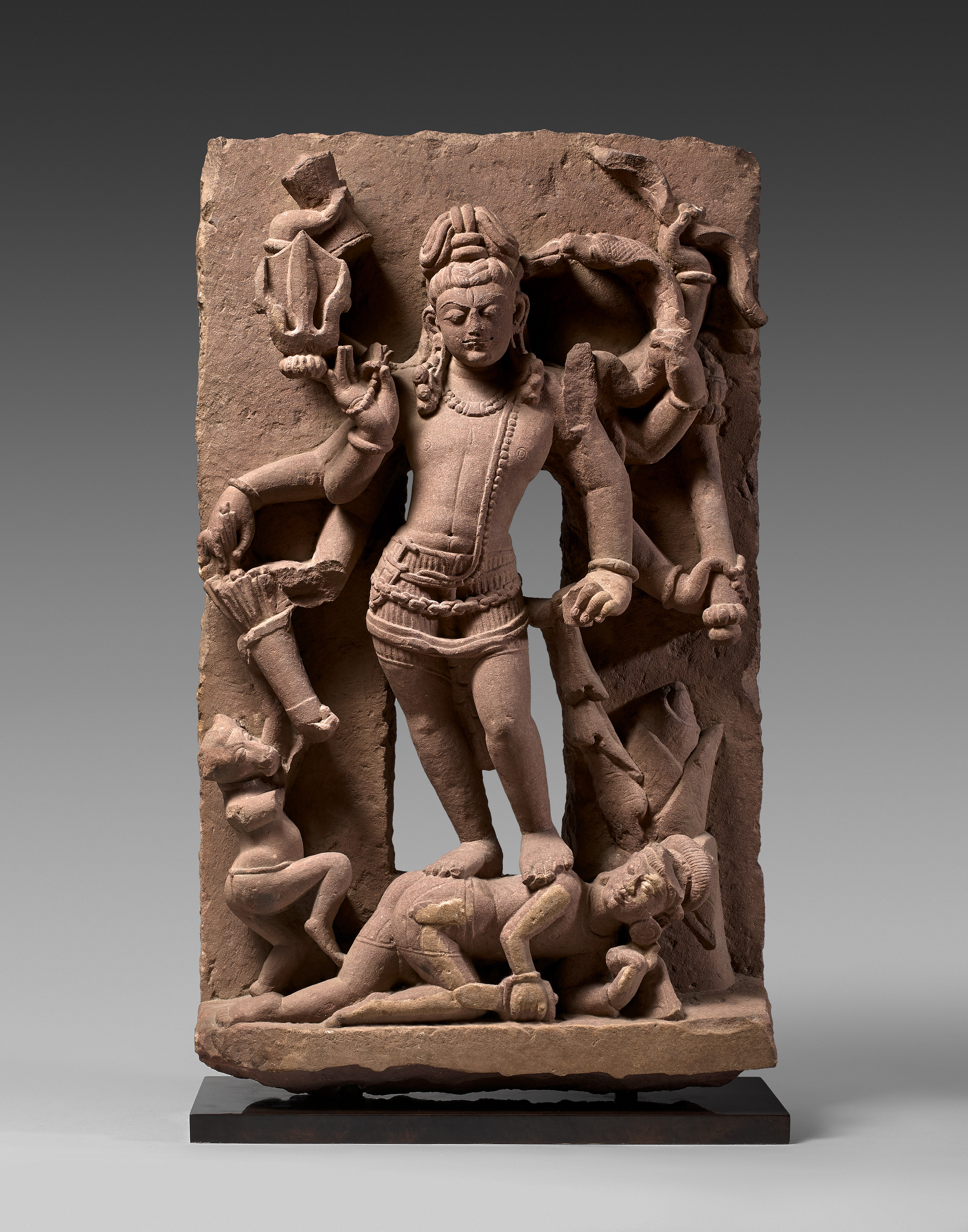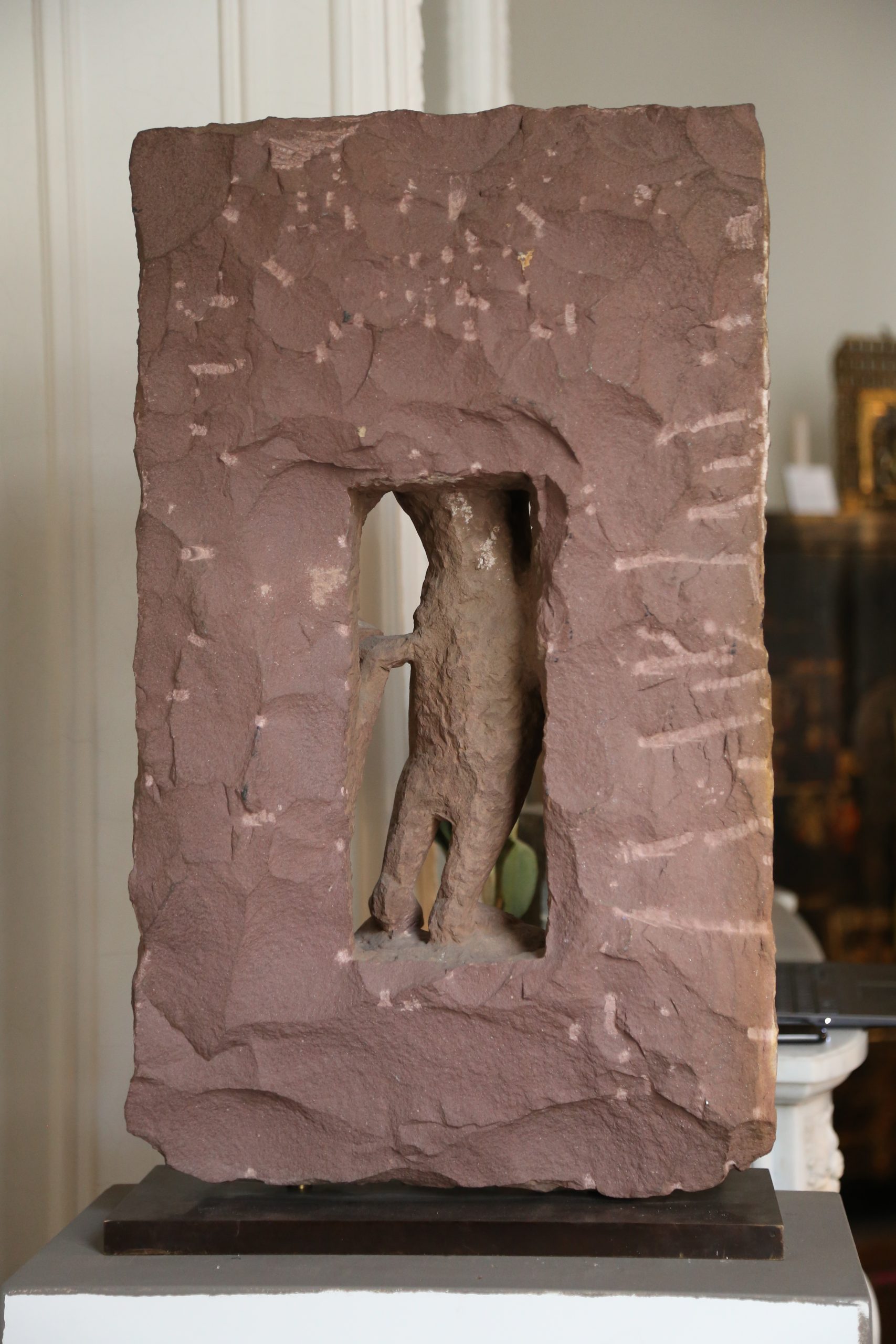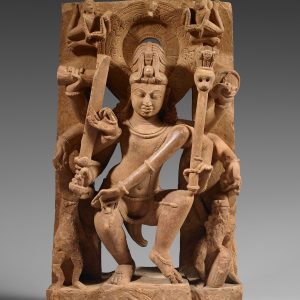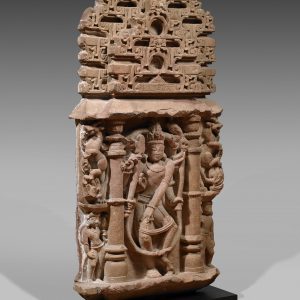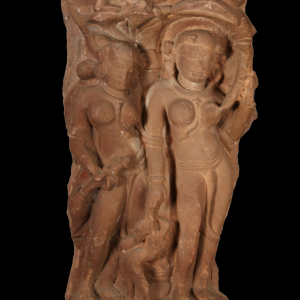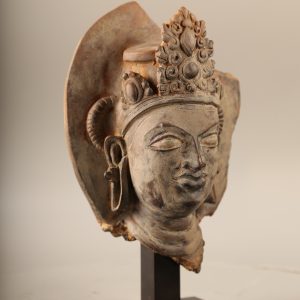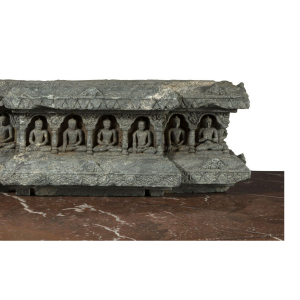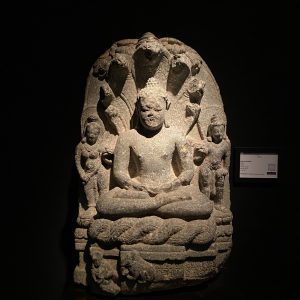Śiva Bhairava Bhikṣāṭana-mūrti
65 000,00€
Sandstone
Northern India, Uttar Pradesh
9th – 10th century
H. 67 cm or 26 ½ in
Description
Carved in the fine-grained pink sandstone frequently found in Uttar Pradesh Province, the stela is an exceptional depiction of the god Śiva sculpted in half-round against a bare background. This stela has a rare iconography. It depicts Śiva in his Bhairava Bhikṣāṭana-mūrti manifestation well known in texts such as the Kūrma Purāṇa, the Liṅga Purāṇa, the Brahmānda Purāṇa and the Śiva Tattvacintāmaṇi of Lakkaṇa Dandeśa: the tale of “The Dancing Beggar Śiva Game” (Tāṇḍava – Bhikṣāṭana līlā).
The sculpture illustrates the two manifestations of Śiva. One is Bhikṣāṭana, naked with a harmonious, slender body, a peaceful, radiant face, braided hair in a bun (jaṭā), and a seductive look that would attract any woman met in his travels, as described in the texts. The other manifestation is the “terrible” Bhairava, covered in ornaments with eight arms and his hands holding his characteristic attributes. His torso is festooned with Brahman threads (yajñopavīta).
Śiva is standing, his right leg straight and his left slightly bent, as if walking, both feet trampling Apasmārapuruṣa, the demon of ignorance incarnate, depicted on all fours and holding a dagger in his right hand.
The attributes held in his eight hands comply with the traditional iconography of Bhairava. The lower right hand, broken, seizes the trident (triśūla) shown in the upper part of the stela, while the second lower right hand seizes an arrow from a quiver held by Nandikeśvara, Shiva’s servant depicted with a bull’s head on a human body. The first upper right hand, open and raised to chest level, holds beads (akṣamālā), while the second upper right hand seizes a small drum (ḍamaru).
As for the left hands, the first lower holds the skull cup (kāpala) under which is depicted the head of a dog, its body fractured, come to lap up the drops of blood falling from the severed head of Brahma. The second lower left hand holds the baton (daṇḍa) or Khaṭvaṅga. The first upper left hand seizes a serpent while the second holds a bow.
The pink sandstone of our stela and its sculptural style, with its supple, slender shapes and harmonious volumes, can be attributed to the sculpture of the 10th century in the Uttar Pradesh region of northern India. The figure’s general silhouette, its facial traits and the treatment of the bun is somewhat reminiscent of the assistants in the two reliefs of the Los Angeles County Museum (Inv. M 79-9. 10 a-b. Pal, 1988, pp. 116-117, No. 45 a-b).
Provenance : Private collection, USA. Rossi and Rossi Ltd London, 1995.
Publication : Rossi & Rossi Catalogue, Sculpture from a sacred realm, 1995.
- Mallmann, Marie-Thérèse, Les enseignements iconographiques de l’Agni-Purana, Paris : P.U.F., 1963.
- Pal, Pratapaditya, Indian Sculpture, A Catalogue of the Los Angeles County Museum of Art Collection, 2, Los Angeles : Los Angeles County Museum of Art – Berkeley-London : University of California Press, 1988.

